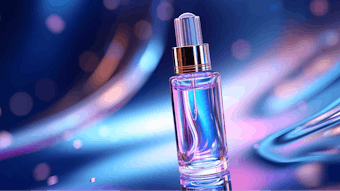Tony O’Lenick examines the difference between cloud point and high cloud point.
Both cloud point and high cloud point refer to the solubility phenomenon that results in haziness; however, the source of the haziness and the conditions under which it is observed are quite different--and both can effect cosmetic formulations.
Cloud point or titer point: Many materials, like esters, have a wide range of molecular weight species present (C8-C22). These different components often solidify at different temperatures. As a product is cooled, a cloudiness often will form as the least soluble material begins to crystallize. Cloud point is the temperature at which the cloudiness is first observed. The evaluation is conducted on the pure product.
As the temperature is lowered, the materials may become solid, the cloudiness may remain, or the insoluble material may drop to the bottom as a precipitate. Upon warming, the cloudiness will disappear. Awareness of this is important to the cosmetic formulator, since often in a given formula, the higher molecular weight material present in a raw material might well contribute to cosmetic properties like feel. If the lower clouding components of the raw material are removed by cold filtering, the benefit they confer will be lost.
To guard against this loss, the appearance specification for this type of material should specify different temperatures--one above the cloud point and one at the cloud point. Thus, it is not uncommon to have a specification for a material specify a clear liquid at 50oC and a hazy liquid at 10oC.
High cloud point or invert cloud point: This phenomenon occurs with surfactants and primarily ethoxylated surfactants. Unlike cloud point, this is observed in aqueous solution. Surfactants that have polyoxyethylene chains have an affinity to hydrate or "pick up" water. Water of hydration improves the solubility of these materials. As one heats the solution, this ability to hold on to the water of hydration is compromised by motion of the polyoxyalkylene chain., which results in a less soluble material.
At a certain temperature, depending on the molecule, the surfactant becomes cloudy. Upon cooling the material re-solubilizes and clarity is re-obtained. This trait carries importance to the cosmetic formulator. Take for example an emulsion formulated with a non-ionic surfactant having a high cloud point of 50oC. The emulsion stability might well be fine below the invert cloud point, but may split as the temperature is reached. This is due to loss of solubility at elevated temperature. High cloud point is also used as a way to obtain heat activation, since surfactants become more substantive to hair and skin at or above their high cloud point, due to lower solubility in water.
These two different physical properties are important attributes of products used in personal care applications and need to be considered as part of the product stability profile for any new product. It is not uncommon for a material to have both a high cloud point and a cloud point. Materials can become cloudy as the temperature drops and clear with heat (cloud point). They can also have an invert cloud point, exhibiting haziness when placed into aqueous solution and heated.










